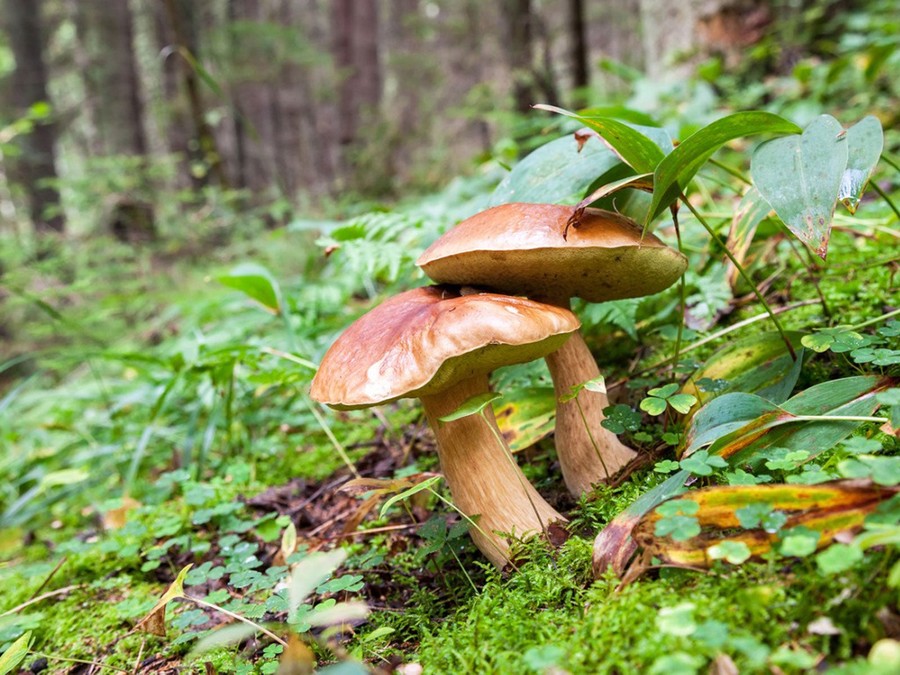Fungi are nature’s subtle helpers, transforming waste into nourishment and stitching together the soil we walk on.
They don’t ask for much, but their impact is profound. For any garden to truly thrive, fungi must be part of the story.
Why Fungi Matter More Than You Think
Most gardeners know to feed their plants and water them well, but few realise just how vital fungi are beneath the surface.
Unlike plants, which make their own food using sunlight, fungi break down organic material in the soil, releasing nutrients that would otherwise remain locked away. Without them, much of what plants need to thrive simply wouldn’t be accessible.
Fungi’s brilliance also lies in their relationships. Mycorrhizal fungi form bonds with plant roots, trading water and hard-to-reach minerals in return for sugars made during photosynthesis.
It’s a mutual partnership that strengthens root systems, boosts growth, and even improves disease resistance. Tomatoes, for example, have been shown to fare better against soil-borne pests when linked up with these friendly fungi.
Meanwhile, decomposer fungi quietly digest leaves, wood, and other plant matter that accumulates over time.
Rather than letting this organic clutter linger, fungi turn it into humus, a rich, dark substance that helps soil retain moisture and feeds future growth.
It’s all part of the garden’s natural recycling process, where nothing is wasted and everything has its place.
Turning Waste into Wealth
One of the most striking roles fungi play is as the garden’s clean-up crew.
When autumn leaves begin to fall and branches snap in a storm, fungi step in. They work steadily through damp, decaying matter, breaking it down into smaller elements that enrich the soil.
This shift creates humus, which not only feeds plants but also improves the soil’s structure and water-holding capacity. In periods of drought, fungal-enriched soil holds on to moisture, helping roots stay hydrated longer.
In wetter seasons, it drains efficiently, avoiding the soggy conditions that lead to rot and root problems.
Beyond decomposition, fungi act as natural builders. Their thread-like filaments, called hyphae, bind soil particles together, forming aggregates that improve aeration and root penetration.
The result is a lighter, more crumbly soil that encourages strong, healthy growth from below.
Encouraging this process doesn’t require fancy techniques. Adding compost, leaf mulch, or even untreated wood chips can create an ideal environment for fungi to flourish.
Digging less also helps, as excessive disturbance breaks apart their networks. In this sense, a more relaxed approach with less tilling and more mulching is often the best way to support thriving, living soil.
Creating a Garden That Looks After Itself
While fungi are busy transforming the ground, their presence also helps the garden above it to become more self-sufficient.
When conditions support healthy fungal activity, plants need less artificial intervention and start managing better on their own.
This is particularly helpful when it comes to pest control. Some fungi, such as Beauveria bassiana, act as natural predators to insects like aphids and nematodes.
They infect these pests and help keep their numbers in check without the need for chemical sprays. Others, like Trichoderma, alter the soil environment to make it less welcoming for harmful microbes, all while supporting plant growth.
By allowing fungi to take on these protective roles, gardeners can reduce their reliance on pesticides and fertilisers. It’s a simpler kind of pest control, but often a more effective one.
The key is to support the conditions fungi need—moisture, organic matter, and minimal disturbance—and let them do the rest.
Creating this sort of self-sustaining ecosystem also brings wildlife into the picture.
As fungi decompose organic materials, they attract beetles, worms, and other small creatures. These in turn draw birds and mammals, while ladybirds and hoverflies—both beneficial pollinators and aphid-eaters, thrive in the microhabitats fungi create.
With fungi at the base, the entire food web benefits, leading to a balanced, flourishing environment that doesn’t require constant intervention.
Practical Ways to Support Fungi in Your Garden
Nurturing fungi doesn’t call for specialist knowledge, only a few simple, consistent habits.
Start with your soil. Incorporate compost, leaf litter, straw, or bark mulch to provide fungi with the nutrients and shelter they need. If possible, avoid synthetic fertilisers and pesticides, which can disrupt the delicate microbial balance in the soil.
Digging less is another powerful way to support fungal networks. Each time soil is turned over, the web of hyphae that fungi use to connect with roots and each other can be severed.
Instead, consider top-dressing with organic matter and letting worms and fungi do the mixing for you. Incorporating kitchen scraps like vegetable peelings or coffee grounds into compost heaps also encourages fungal activity.
Old logs, decomposing bark, or wood chips that already host mushrooms are excellent additions. If placed in shaded areas or near pathways, they break down slowly and provide ongoing benefits to nearby plants.
Fungi also require moisture, so be sure to water consistently during dry spells, but without saturating the soil. Good drainage is as important as hydration.
If you’re pursuing seasonal gardening by timing your efforts to suit nature’s rhythms, you’ll likely find fungi appear where they’re most needed, helping your garden adapt and thrive throughout the year.
Composting, Soil Testing, and Going a Little Deeper
Fungi are often overlooked in composting, but they can drastically speed up the breakdown of tough, fibrous material. Mushrooms, in particular, excel at digesting woody components that bacteria struggle with.
Adding mushroom scraps or wood chips already colonised with fungal threads gives your compost heap a head start and reduces the time it takes to turn waste into usable soil.
Keep your compost slightly damp, as dry heaps discourage fungal activity. And avoid over-packing the pile, as airflow is key.
The result is richer, darker compost with a better balance of nutrients, which translates directly into healthier garden beds.
Finally, it’s worth taking the time to understand your soil. Simple testing kits can reveal pH and nutrient levels, but some services now offer more advanced analysis, including microbial assessments that reflect fungal health.
You can even test for soil respiration to measure how much microbial activity is taking place—an indirect but powerful indicator of fungal presence.
Adding organic matter, keeping moisture levels steady, and resisting the urge to over-cultivate will naturally improve fungal populations.
With better insight, you’ll be able to make decisions that benefit the whole garden, not just its most visible parts.
Conclusion
If you’ve started supporting fungi, you’re already doing something brilliant for your garden. You’ve tapped into nature’s most reliable allies, quietly working beneath the surface.
When they’re on your side, you’re cultivating a living, breathing ecosystem rather than just plants.











